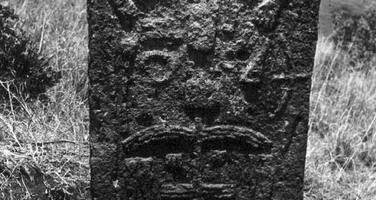Tiya
Factors affecting the property in 1996*
- Management systems/ management plan
International Assistance: requests for the property until 1996
Total amount approved : 5,000 USD
| 1996 | Review of Lalibela's restoration programmes, in situ ... (Approved) | 5,000 USD |
Missions to the property until 1996**
Conservation issues presented to the World Heritage Committee in 1996
The city of Tiya is representative of the numerous archaeological sites of the Megalithic period which bear witness to extinct cultures.
The preservation of the site is effective, but it could be further improved by:
- developing the surrounding area,
- installing a signposting system,
- numbering the stelae, and
- improving the maintenance of the grassy surface of the site and the drainage system to avoid flooding during the rainy season.
However, for it to be truly enhanced, the site should be linked to its cultural environment, i.e., with all the Megalithic sites of the Soddo region. It would therefore be advisable to extend the site inscribed to a significant regional cultural ensemble.
Analysis and Conclusion by World Heritage Centre and the Advisory Bodies in 1996
The Bureau may wish to adopt the following recommendation and request the Committee to take note:
"The Bureau encouraged the Centre for Research and Conservation of the Cultural Heritage (CRCCH) to implement the above-mentioned proposals which aim to improve the presentation of the site, and to envisage its extension. It requests the Ethiopian authorities to keep the World Heritage Centre informed of the progress achieved."
Summary of the interventions
Decisions adopted by the Committee in 1996
20 EXT.BUR A.1.3
Annex 7-International Assistance requests approved by the Bureau-Ethiopia
CULTURAL HERITAGE
A.1 TECHNICAL CO-OPERATION
A.1.3 Lalibela; Fasil Ghebi; Lower Valley of the Awash; Tiya; Aksum and Valley of of the Omo (Ethiopia) (US$ 27,500 requested)
Considering the quality and the well-chosen small-scale activities which are already partly funded by the Centre for Research and Conservation of Cultural Heritage (CRCCH) , and in order to backstop the remarkable achievements and commitments of CRCCH to conservation,
the Bureau approved an amount of US$ 27,500. Support from the World Heritage Fund will permit the funding of international experts to examine the studies and restoration programmes for Lalibela, to improve the presentation of Tiya and organize an in-situ training course in Gondar.
20 COM VII.D.66/67
SOC noted by Committee: Tiya (Ethiopia)
VII.66 Tiya (Ethiopia)
The city of Tiya is representative of the numerous archaeological sites of the Megalithic period which bear witness to extinct cultures.
The Secretariat reported that the preservation of the site is effective, but that it could be further improved by a series of measures, including:
- developing the surrounding area,
- installing a signposting system,
- numbering the stelae, and
- improving the maintenance of the grassy surface of the site and the drainage system to avoid flooding during the rainy season.
However, for it to be truly enhanced, the site should be linked to its cultural environment, i.e., with all the Megalithic sites of the Soddo region. It would therefore be advisable to extend the site inscribed to a significant regional cultural ensemble.
The Bureau encouraged the Centre for Research and Conservation of the Cultural Heritage (CRCCH) to implement the above-mentioned proposals which aim to improve the presentation of the site, and to envisage its extension. It requested the Ethiopian authorities to keep it informed of the progress achieved.
* :
The threats indicated are listed in alphabetical order; their order does not constitute a classification according to the importance of their impact on the property.
Furthermore, they are presented irrespective of the type of threat faced by the property, i.e. with specific and proven imminent danger (“ascertained danger”) or with threats which could have deleterious effects on the property’s Outstanding Universal Value (“potential danger”).
** : All mission reports are not always available electronically.


